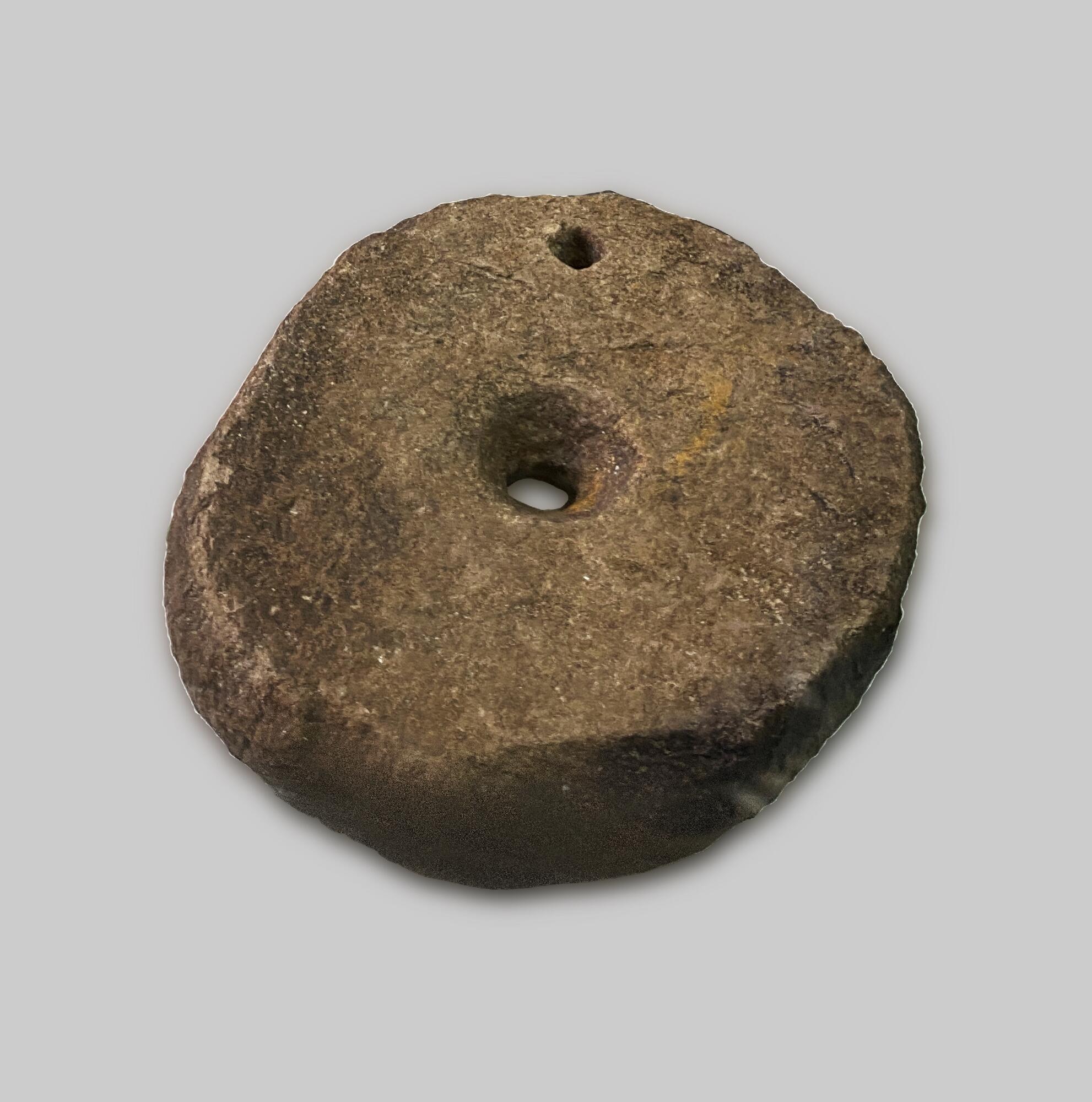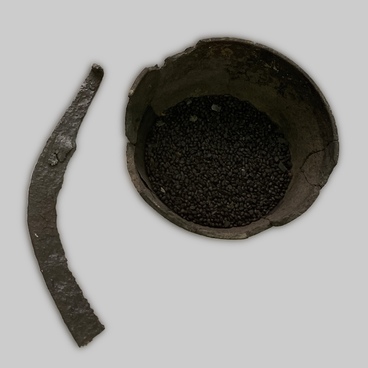The upper grindstone from the museum collection is movable. It is one of the pair of stones used in a hand mill to grind grain into flour. It was cut out of one piece of hard grey mountain rock, in the shape of an irregular disk. In the center of the grindstone there is a 3.5 cm through-hole. It was necessary to install a shaft or a stem into, combining both grinds of the mill. At the side of the upper surface there is a round cavity for a handle used to turn the upper grindstone.
In all countries where baked bread was a base food product, the grains of wheat and, to a less extent, rye, were made into flour. The flour was not only used for baking bread but also, for making pasta and pastry. Some flour was also made of barley, corn, oats, buckwheat, peas, soya and sorgo. It was used in food, textile, fermentation and other industries.
Flour production is one of the oldest world industries. It originated about 6-10 thousand years ago. The tools, and later, machines that man used to grind grains into flour were called mills. The same name was given to the entire grain grinding enterprises. Currently, all governmental mills are called milling plants.
Grinding the grain into a powder-like product required significant efforts. After the impact and attrition mills appeared, the process became much simpler. The flour resulting from grinding was of dark colour. The bread baked of such flour was also dark as that milling method involved all parts of the grain into making the flour, the dark colour grain hulls among them. If you put the flour through a fine capronic or silk sieve, you can easily see that it consists of particles of various sizes. Larger particles that remained in the sieve usually contained the grain hulls.
The flour put through the sieve was of a lighter colour, but still contained some hulls. That is why the bread crumb of such flour remained grey. White bread with light crumb, could only be made of endosperm flour. It was obtained by fully cleating the grains from hulls.
In all countries where baked bread was a base food product, the grains of wheat and, to a less extent, rye, were made into flour. The flour was not only used for baking bread but also, for making pasta and pastry. Some flour was also made of barley, corn, oats, buckwheat, peas, soya and sorgo. It was used in food, textile, fermentation and other industries.
Flour production is one of the oldest world industries. It originated about 6-10 thousand years ago. The tools, and later, machines that man used to grind grains into flour were called mills. The same name was given to the entire grain grinding enterprises. Currently, all governmental mills are called milling plants.
Grinding the grain into a powder-like product required significant efforts. After the impact and attrition mills appeared, the process became much simpler. The flour resulting from grinding was of dark colour. The bread baked of such flour was also dark as that milling method involved all parts of the grain into making the flour, the dark colour grain hulls among them. If you put the flour through a fine capronic or silk sieve, you can easily see that it consists of particles of various sizes. Larger particles that remained in the sieve usually contained the grain hulls.
The flour put through the sieve was of a lighter colour, but still contained some hulls. That is why the bread crumb of such flour remained grey. White bread with light crumb, could only be made of endosperm flour. It was obtained by fully cleating the grains from hulls.



